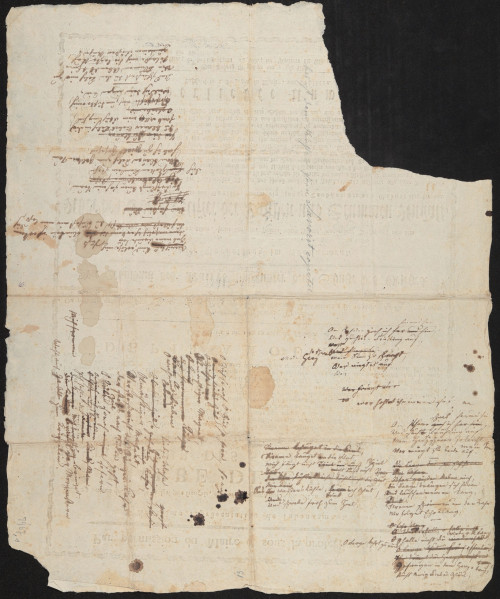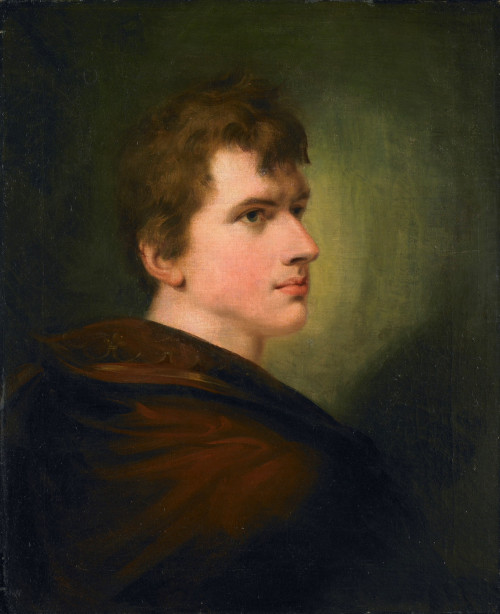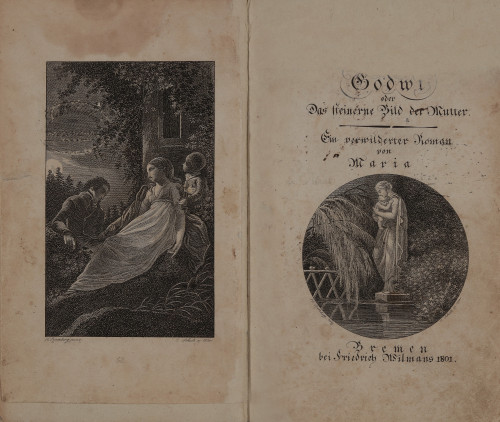This display has at its centre what seems to be a ship with a graphic novel on its sails recounting Achim von Arnim and Clemens Brentano’s trip down the Rhine. They two had met in Göttingen in 1801, when both were students, and immediately become friends. The following year, in early June 1802, Arnim stopped in Frankfurt am Main on his Grand Tour of Europe. From there the two set out for a short trip down the Rhine. Brentano hailed from Ehrenbreitstein opposite Koblenz, where he was born in 1778, and was well acquainted with the Middle Rhine. They had two freshly published novels in their luggage: Heinrich von Ofterdingen by Novalis and Brentano’s Godwi. The one-week trip took them down the river from Mainz to Koblenz via Bingen and Rüdesheim.
The days they spent together in the picturesque landscape characterized by vineyards and old castles strengthened the bond between them. On the ships they delighted the balladeers with their folk-like songs. Nonetheless, the times were also difficult: the regions to the river’s west already belonged to French national territory under Napoleon.
When Arnim continued his journey alone, Brentano remained wistfully behind in occupied Koblenz. On the back of a theatre poster he drafted the poem At the Rhine I Waver Back and Forth. Numerous corrections reveal the working process. The subject is a journey on the Rhine. “From the water’s coolness I drink embers”, he writes, “And float gladly to my destination.” At the end, like the hero of Novalis’s Heinrich von Ofterdingen, the poetic persona sees a blue flower. In Brentano’s text, however, the positive symbol alters; the flower has a sombre side: “Poison me, envelop me with thy fragrance, / For I am thine own.”
Brentano had already portrayed the Rhine Valley as a place of romantic longing in his novel Godwi published the previous year. The fragmentary final section of that work includes the poem At Bacharach on the Rhine, likewise revolving around longing, love, and death. The “sorceress” described here is Lore Lay, a character created by Brentano. She soon came to be regarded as an ancient legendary figure, and other authors adopted the motif. Heinrich Heine’s Loreley poem of 1824 became the most famous: “I know not the meaning of this sorrow of mine.” On the music track you hear the rendering by Clara Schumann. Rhine Romanticism culminated in the version of Heine’s poem set to music by Friedrich Silcher in the year 1837.
Objects
-

CLARA SCHUMANN
Lorelei, 1843
Nach Heinrich Heine. Julian Prégardien (Tenor) und Michael Gees (Klavier). Live-Mitschnitt: Robert-Schumann-Gesellschaft. Frankfurt am Main, 2017.
-

CLEMENS BRENTANO
Am Rheine schweb ich her und hin (before June 22, 1802)
-

EDUARD STRÖHLING
Achim von Arnim, 1804
-

CLEMENS BRENTANO
Godwi oder Das steinerne Bild der Mutter. Ein verwilderter Roman von Maria
2 Bände. Bremen: Wilmans 1801.